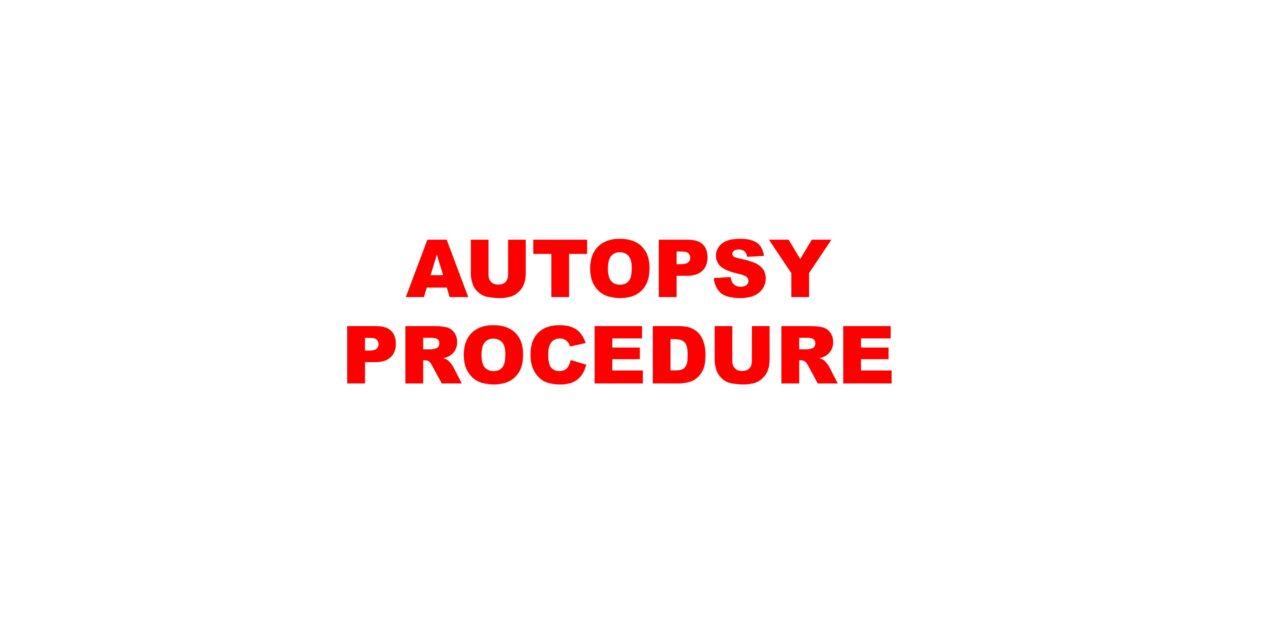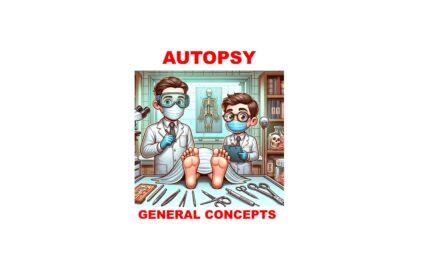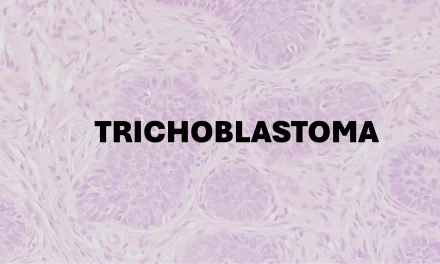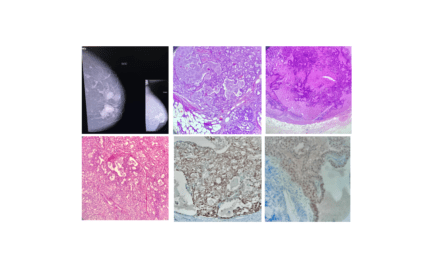1. What are the precautions you should take before performing an autopsy?
The general principles for ensuring safety involve recognition of risk, identification of hazards which give rise to these risks and finally elimination of hazards where possible. Of particular concern among the risks today are HIV, blood-borne hepatitis, agents of CJD, tuberculosis and COVID infections.
RISKS
a. HIV –
i. Remains viable for up to 6 days after death and for 14 days in spleen tissue at 20°C
ii. Unprotected viruses are destroyed by sterilization involving heat and chemical agents such as hypochlorite and glutaraldehyde.
b. Blood borne Viral Hepatitis
i. Hepatitis B, C, D and G
ii. Protection by immunization
iii. Readily destroyed by sterilization
c. Tuberculosis
i. By inhalation of aerosols in the PM room
ii. Source – lungs
iii. Susceptible to heat sterilization and disinfectants
HAZARDS
a. Inhalation – aerosols contaminate surfaces and instruments which act as a vehicle for transmission of infection
b. Ingestion
c. Inoculation
d. Entry through conjunctiva/mouth
BARRIERS
Barriers need to be established at 3 levels.
a. Primary barrier – around the perceived hazard, intended to contain the hazard
i. Physical facilities:
• Size of the autopsy room – sufficient to prevent overcrowding
• Autopsy suite – adequate facilities for body storage and adequate accommodation in which staff can also change, wash and shower.
• Adequate lighting and ventilation
ii. Techniques and working practices:
• Well trained staff
• Handle organs with care as squeezing and rough manipulation can lead to aerosol formation and splashing
• For cases for TB, introduce 10% formalin into the lungs after microbiological samples have been taken
• Avoid high pressure aerosol sprays
• Intestines to be opened under water but not under running tap
• Care must be taken to avoid injuries by sharps
• Contamination from blood or other body fluid must not be transferred from gloved hand to surface which may subsequently be touched by ungloved hand
• All surfaces, apparatuses and equipment needs to be thoroughly washed with water and decontaminated with disinfectants such as phenol, hypochlorite, 10% formalin and 2% glutaraldehyde
b. Secondary barrier – around the worker
i. Protective clothing:
• Gloves, waterproof boots and aprons
• Gloves to be changed immediately if torn
• Eye protection for all workers
ii. Personal hygiene: smoking, drinking, eating or application of cosmetics should be prohibited in the work area
iii. Medical welfare services:
• Pre-employment screening
• Immunization against tetanus and HBV.
• Follow-up
c. Tertiary barrier – around the autopsy room
i. Care of visitors:
• Physical barrier or a line of demarcation between clean and dirty areas to prevent entry of unauthorized personnel.
• Demonstration of unfixed organs should not be given in cases of TB, HBV, HIV, CJD, COVID
• Arrangements to safeguard relatives of deceased who wish to see the body, the ambulance staff and undertakers
ii. Waste disposal:
• Any human tissue to be incinerated specific for this purpose
• Separate disposal of sharps
• Gowns to be returned to laundry after use
iii. Transport of specimen:
• Packaged and labelled in an enclosed sealable plastic bag
• Accompanying form should not be in contact with specimen
• High risk labels must be present on container
iv. Disposal of body
2. What is the ideal autopsy room?
a. Located as part of the mortuary
b. 30’ x 20’
c. 2 tables of 400sq.ft (for every 450-hospital death/year) of stainless steel with washing and drainage facility
d. Space for trolley, students and doctors
e. Floor must be hard, durable, moisture resistant and easily cleanable
f. Walls must be thick, durable, permanent, fitted with tiles that are impermeable and washable
g. Junctions between walls and floor to be covered
h. Ceiling made with material that can be cleaned. Principal room height of 12 feet and ancillary room height of 10 feet.
i. Wide doors
j. Windows allowing sufficient natural light on the northern side. They should be large, opaque and flyproof. The windowsills need to be 5 feet above the floor.
k. Corridor not less than 8 feet
l. Fluorescent lights above the table with at least 1 tilting mechanism. Avoid glare.
m. Natural ventilation by windows except PM room where an exhaust system is used. Fans should be installed in such a way that there are 10 air changes/hour.
n. All taps to be below elbow level. 2 sinks, one each for clean and dirty work.
o. Cupboards and shelves for storage
p. Writing desk and chair
q. Internal and external telephone lines for communication
r. Emergency lighting, sprinklers, detectors, fire alarm and fire exit.
3. Common equipment used in autopsy.
a. Weighing machines – 3, top load tray up to 500gms and up to 5kg
i. Platform scale for weighing whole body
ii. Balance for 100gm to 1kg
iii. Balance for 0.2gm to 10gm
b. Gloves
c. Aprons
d. Eye goggles
e. Trolley
f. Magnifying glass
g. Vials for sample collection
h. Chemicals –
i. Sodium hypochlorite
ii. Bleaching powder
iii. 2% glutaraldehyde
iv. Sodium hydroxide
v. 10% formalin
vi. Spirit
vii. Common salt
viii. Sealing wax
i. Instruments –
j. Autopsy table
4. Types of incisions
Regardless of the method chosen, the body should be placed in a supine position with a block under the shoulder to extend the neck.
a. I shaped – incision extends from symphysis menti to pubic symphysis
b. Y shaped – incision starts from either side at the mastoid process till xiphisternum and then extends up to the pubic symphysis
c. Modified Y incision – starts below bilateral axillary folds, beneath the breasts till the xiphisternum and then extending up to pubic symphysis
d. T shaped – extending across bilateral acromian processes over the suprasternal notch. A perpendicular incision is made from suprasternal notch to the pubic symphysis
e. Inverted Y shaped – starts at symphysis menti in midline and comes down to the umbilicus where it bifurcates and moves to the respective iliac crests
f. X shaped – on the back of the body
5. Why should the incision deviate around the umbilicus?
Umbilicus is spared as it consists of dense fibrous tissue making it difficult to cut and difficult to stitch it back leading to oozing of fluids and will be cosmetically disturbing.
6. What are the techniques of organ removal
| TECHNIQUE | DESCRIPTION | ADVANTAGES | DISADVANTAGES |
|---|---|---|---|
| LETULLE EN MASSE DISSECTION | Removing most, if not all, of the internal organs as one block and subsequently dissected into organ blocks. | - All organ and system attachments intact, allowing relationships between various organs to be adequately assessed.- Best of the four for observing the pathological and anatomical relationships between structures. | - Large external incisions are required - Large conglomerate of organs is produced - Time consuming. |
| THE VIRCHOW METHOD | Removal of individual organs one by one with subsequent dissection of that isolated organ. | - Assessing individual organ pathology- Quick and effective method if the pathological interest is in a single organ. | Relationships will often be difficult to interpret or completely destroyed. |
| GHON EN BLOC REMOVAL | Combines the preceding two methods – each cavity is removed as organ blocks | Quick and preserves most of the important inter-organ relationships | If an unexpected pathology is encountered these could be destroyed and thereby neglected |
| ROKITANSKY IN SITU DISSECTION | Dissecting the organs in situ with little actual evisceration being performed prior to dissection combined with removal of organ blocks | Performing postmortems on patients with highly transmissible diseases so that tissue is not removed from the body. | Relationships between various organs may be hard to interpret. |




